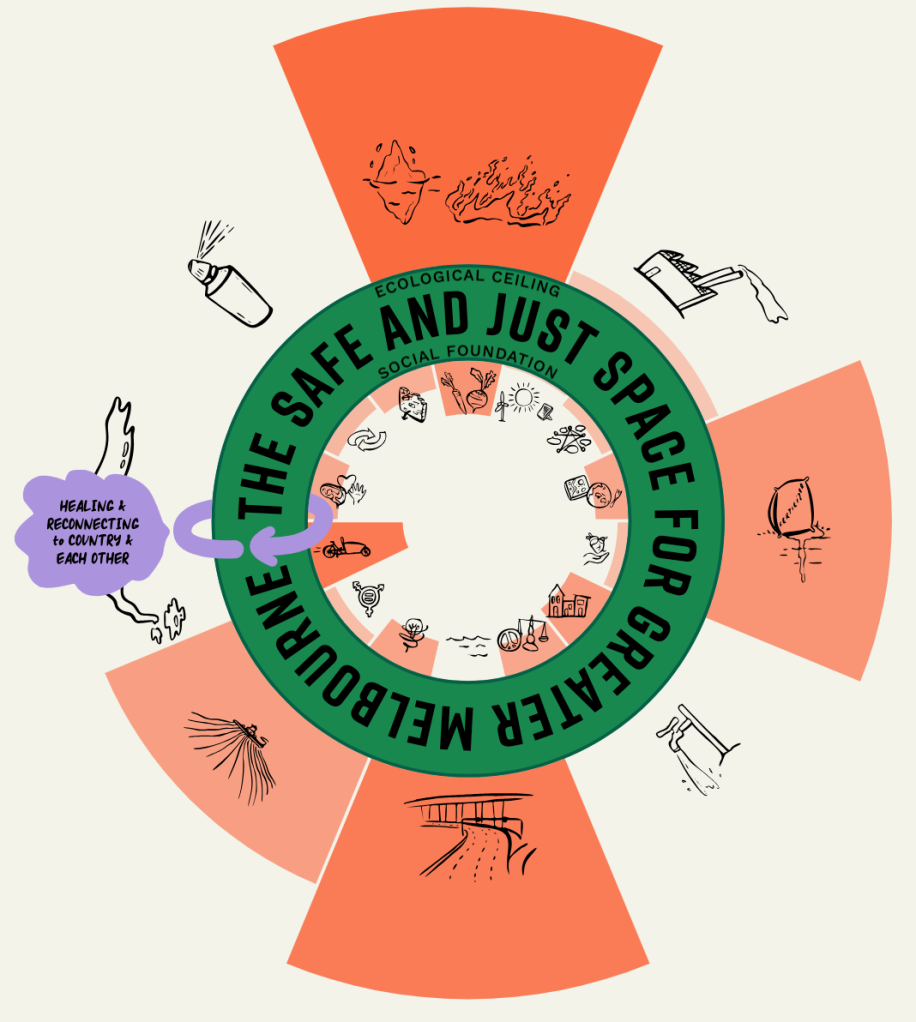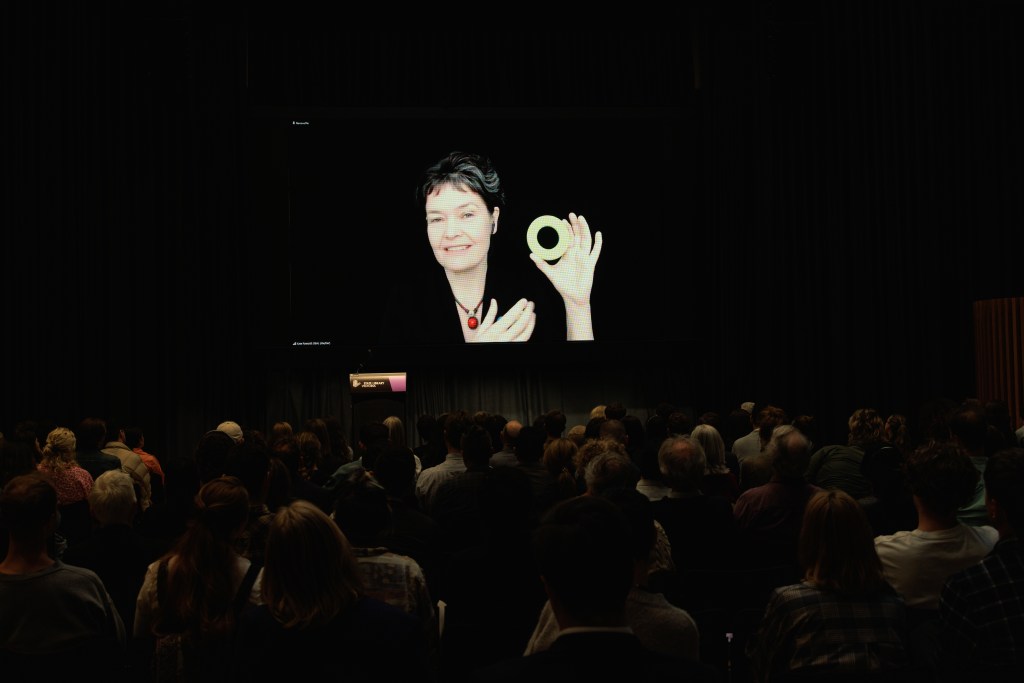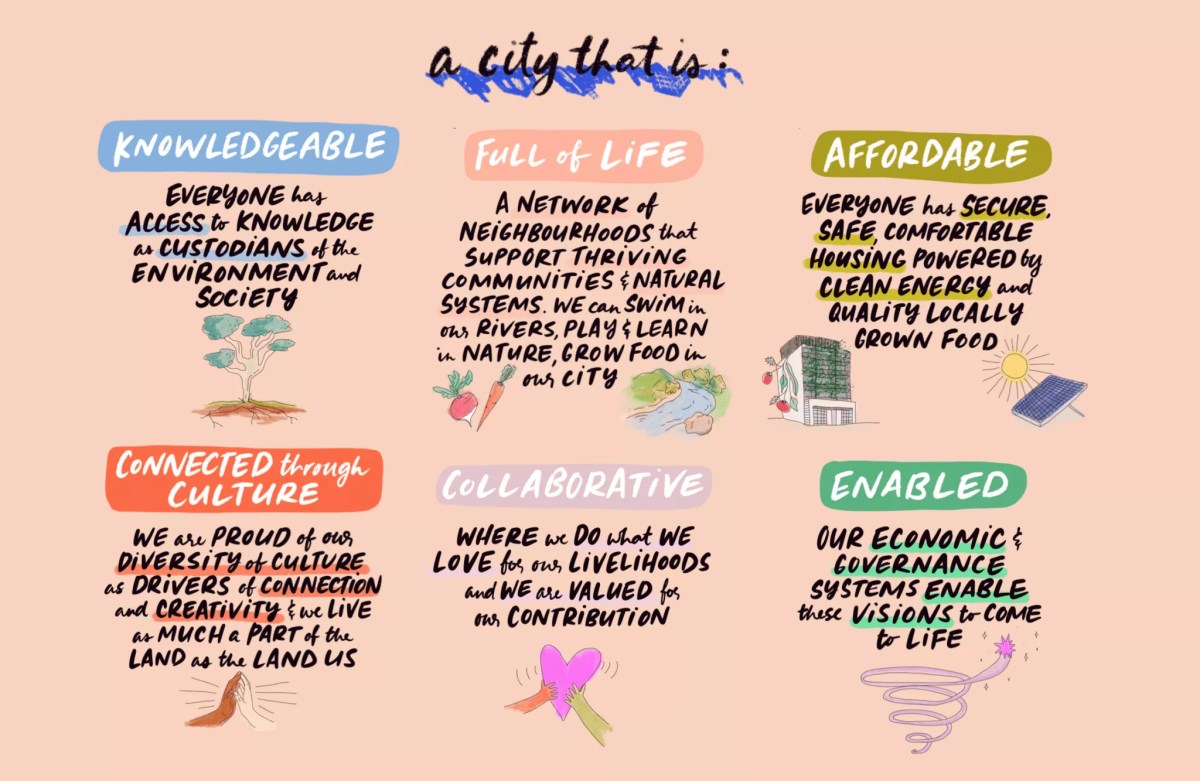This Monday I had the opportunity to attend Regen Melbourne’s launch of The Greater Melbourne City Portrait and the Melbourne Doughnut, which explores how well the city is tracking as a place that supports people and planet to thrive.
As it happened, the launch fell on “Global Donut Day” — a day of local, community-led festivals, connected throughout the world, centred around Doughnut Economics — and featured a number of speakers including Doughnut Economics author and co-founder of the Doughnut Economics Action Lab, Kate Raworth, and Kaj Lofgren, the CEO of Regen Melbourne.
The following provides an overview of the Greater Melbourne City Portrait and its launch…
Regen Melbourne has revealed an Australian first, data-driven portrait of Greater Melbourne that will act as a new compass for the city’s progress.
How liveable is Melbourne really? In what ways are our social and environmental challenges interrelated, and how might we move beyond GDP and measure our holistic progress as a city? The Greater Melbourne City Portrait is a digital platform that aims to help answer these questions, with deep research and analysis into the city’s ecological overshoot and social shortfall.
To bring this to life, Regen Melbourne has spent 3 years collaborating with dozens of industry and government experts, organisations and researchers across six universities to examine quantitative data that measures Melbourne’s current state, and its future potential.
“While Melbourne consistently ranks as one of the most liveable cities in the world, that title conceals an uncomfortable truth: our liveability isn’t equally distributed and we are currently living beyond our means,” says Kaj Lofgren, CEO of Regen Melbourne.
“The City Portrait presents a new way for us to effectively measure the social and ecological progress of Melbourne and build practical pathways to a resilient and regenerative future.”
British economist, author of Doughnut Economics and co-founder of the Doughnut Economics Action Lab, Kate Raworth (and her team) helped Regen Melbourne develop the Melbourne Doughnut – a model that reorients society away from a growth-at-all-costs mindset and towards a focus on building a social foundation that respects our planetary boundaries.
The inside of the doughnut represents a ‘safe and just space’ for Melbourne which is now able to be measured through the City Portrait – a first for Australia.

“Today we have economies that need to grow, whether or not they make us thrive. What we need are economies that make us thrive, whether or not they grow” says Raworth, who (virtually) joined Regen Melbourne and collaborators to reveal 6 key insights from the 2023 Greater Melbourne City Portrait, including:
- Melbourne’s liveability is not evenly distributed. Over 13% of Melbourne’s households live in poverty after housing costs are accounted for. Many Melburnians also face severe food insecurity and barriers to quality healthcare and education.
- Melbourne is exceeding its ‘Ecological Ceiling’ as a result of its current liveability. Greater Melbourne emits 32.91 million tonnes of CO2 equivalent per year. We are pushing the limits of what the planet can sustain by consuming too many resources, converting too much land for human use and producing too much waste.
- Greater Melbourne isn’t a bubble. We must acknowledge our relationships with surrounding regions and people globally, and the impact that our lives have on them. In particular, the cheap goods and services we frequently take for granted are too often produced by people without the rights and income to meet their basic needs.
- Our social and environmental challenges are deeply interconnected. The City Portrait reveals that siloed problem solving can create unintended consequences (e.g. building more housing on green wedges may temporarily relieve pressure on the market but will permanently displace wildlife and reduce our ability to grow food locally.
- We have the resources we need for our city to thrive. The City Portrait reveals the many strengths that we have as a city, including deep expertise from global leaders in urban resilience and the future of cities. We have all the financial, technical and natural resources and insight we need to meet our human needs within the ecological ceiling.
- We have a global responsibility. Melbourne is a wealthy and privileged global city and is a disproportionate contributor to planetary breakdown. Therefore, we have a global responsibility to build on our strengths and become a beacon city for regeneration.

“The City Portrait is a reality check for our city, but the good news is that this picture isn’t set in stone,” says Alison Whitten, Research Lead for Regen Melbourne. “Now, policymakers and stakeholders can use the City Portrait to identify the threats to the liveability of Greater Melbourne and think about the changes we need to make to build a robust and resilient city”.
Regen Melbourne is driving conversations across the city, with communities, business, universities and government coming together to spark action across a number of initiatives.
Mr Lofgren believes that “our interconnected challenges simply can’t be solved by single actors. We need collaboration on an epic scale, tackling our challenges ambitiously and holistically. This work is complex and challenging but it can also be full of connection and joy. The path forward is clearer than it has ever been before.”
Regen Melbourne has invited feedback on the interactive Melbourne Doughnut, which can be found here: https://doughnut.regen.melbourne/
About Regen Melbourne
Regen Melbourne is an engine for ambitious collaboration in service of our city. We serve as the host and driver of wildly ambitious projects and research toward a regenerative Melbourne. Powered by an alliance of more than 180 organisations, our vision is for a thriving city within planetary boundaries.
Media contact: emma@goodandproper.co / Brand contact: nicole@regen.melbourne

